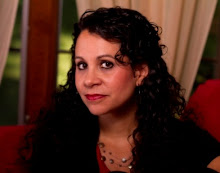 When we are talking about a plot, I am compelled to say: SHOW DON’T TELL. You might study some of your favorite movies. A movie has to show you what is going on. It’s the nature of the beast. Also, while you’re at it, study books on your keeper shelf to see what that author did as far as plotting went. Go through it scene by scene to see the progression of the plot. Another thing you can do is do that with your own book even if you’ve only completed part of it. Stepping back and looking at your book scene by scene can tell you if you’ve done what you should--address the goals, motivation and conflict and have at least three reasons for the scene. If not, cut the scene or change it until you have accomplished what you need to.
When we are talking about a plot, I am compelled to say: SHOW DON’T TELL. You might study some of your favorite movies. A movie has to show you what is going on. It’s the nature of the beast. Also, while you’re at it, study books on your keeper shelf to see what that author did as far as plotting went. Go through it scene by scene to see the progression of the plot. Another thing you can do is do that with your own book even if you’ve only completed part of it. Stepping back and looking at your book scene by scene can tell you if you’ve done what you should--address the goals, motivation and conflict and have at least three reasons for the scene. If not, cut the scene or change it until you have accomplished what you need to.Remember when plotting keep in mind your characters’ goals, motivations and conflicts (that’s what a story is about--if not it isn’t a story that will hold a reader’s interest). A character has a goal because of a motivation but the conflict gets in the way of that goal. A character’s motivation should run through the whole book--something the protagonist doesn’t have is the best. The goal needs to be strong enough that the character will act against his best interest. Through conflict your character grows and is tested. This is where you can play up the faith element and have your character grow spiritually. The conflict should require your character to make choices and sacrifices. Debra Dixon wrote an excellent book called Goals, Motivation and Conflict about these three elements of a story. I highly recommend you get a copy and read it. By understanding and developing these three elements of your main characters you will have your plot for the story.
As I said at the first some writers outline thoroughly before writing a word while others write by the seat of their pants. I write in between those two methods. I have a good sense of my two main characters and sometimes secondary characters, depending on the story. I know what my beginning will be and my end. I also know what my high points will be (derived from what the conflicts are).
I like for a plot and the characters to percolate in my mind before I begin writing. I want to get a sense of who these people are and what they want to do (as well as what I want them to do). I also use this time to brainstorm with my critique group or myself. I love to brainstorm ideas about my book or anyone else’s. I look at it as a giant jigsaw puzzle that needs to be put together--sometimes one slow piece at a time. Some plots flow quickly from me, others take a long time.
After I’ve done this I sit down to write my first three chapters, then my outline to submit to my publisher. I will say when writing my outline for the rest of the book I realize that it may change over time. Never lock yourself into a plot. Learn to listen to your characters as they develop in the story. I often find they usually know what’s best, especially as I get to know them better.
Margaret Daley
TIDINGS OF JOY, Love Inspired, October 2006
HEART OF THE AMAZON, Love Inspired Suspense, January 2007
http://www.margaretdaley.com
http://margaretdaley.blogspot.com

1 comment:
Great stuff! Thanks!
Post a Comment